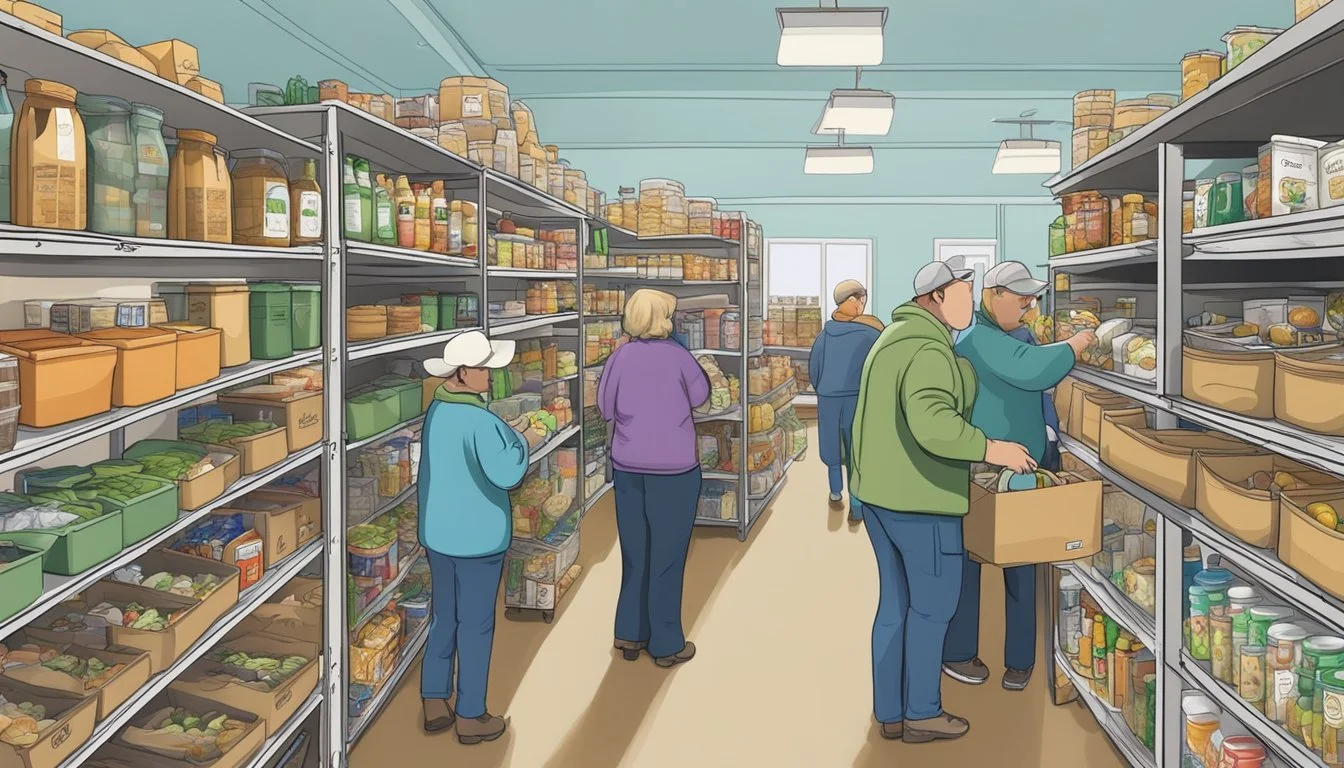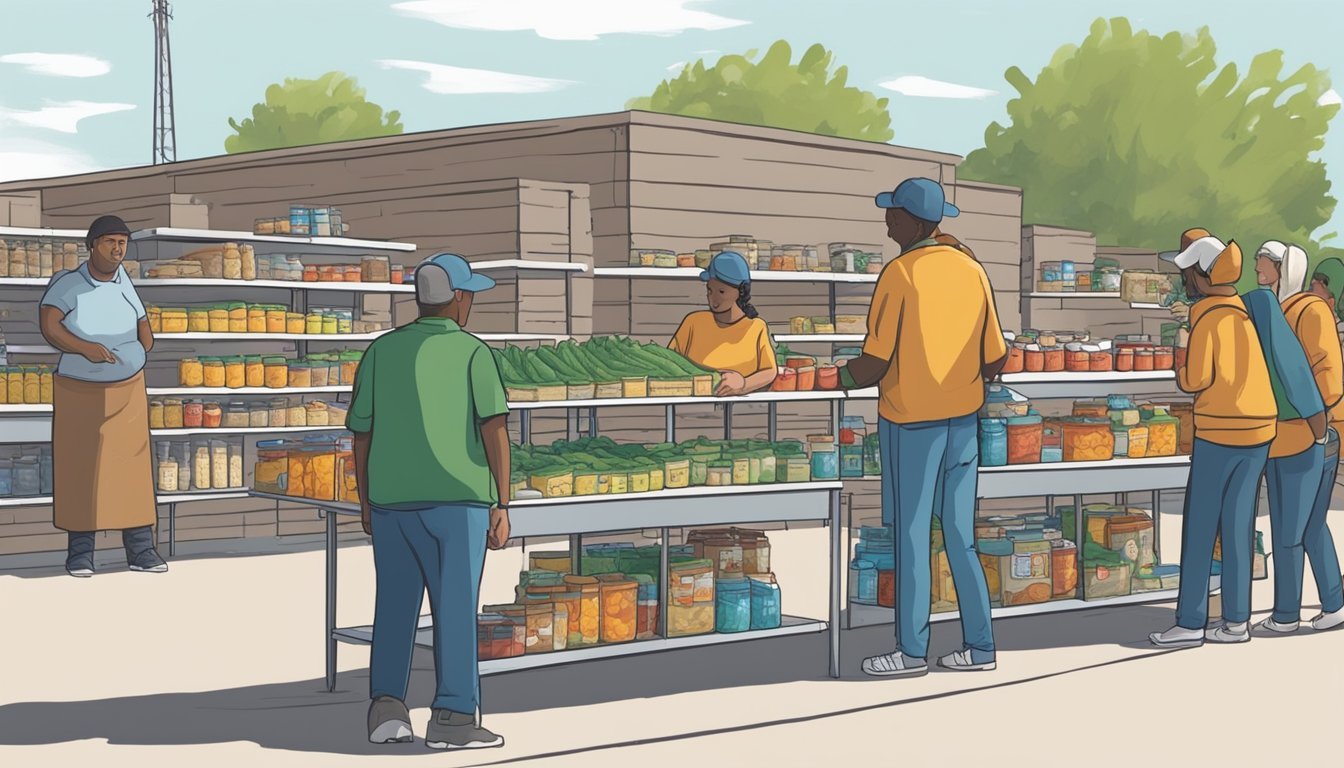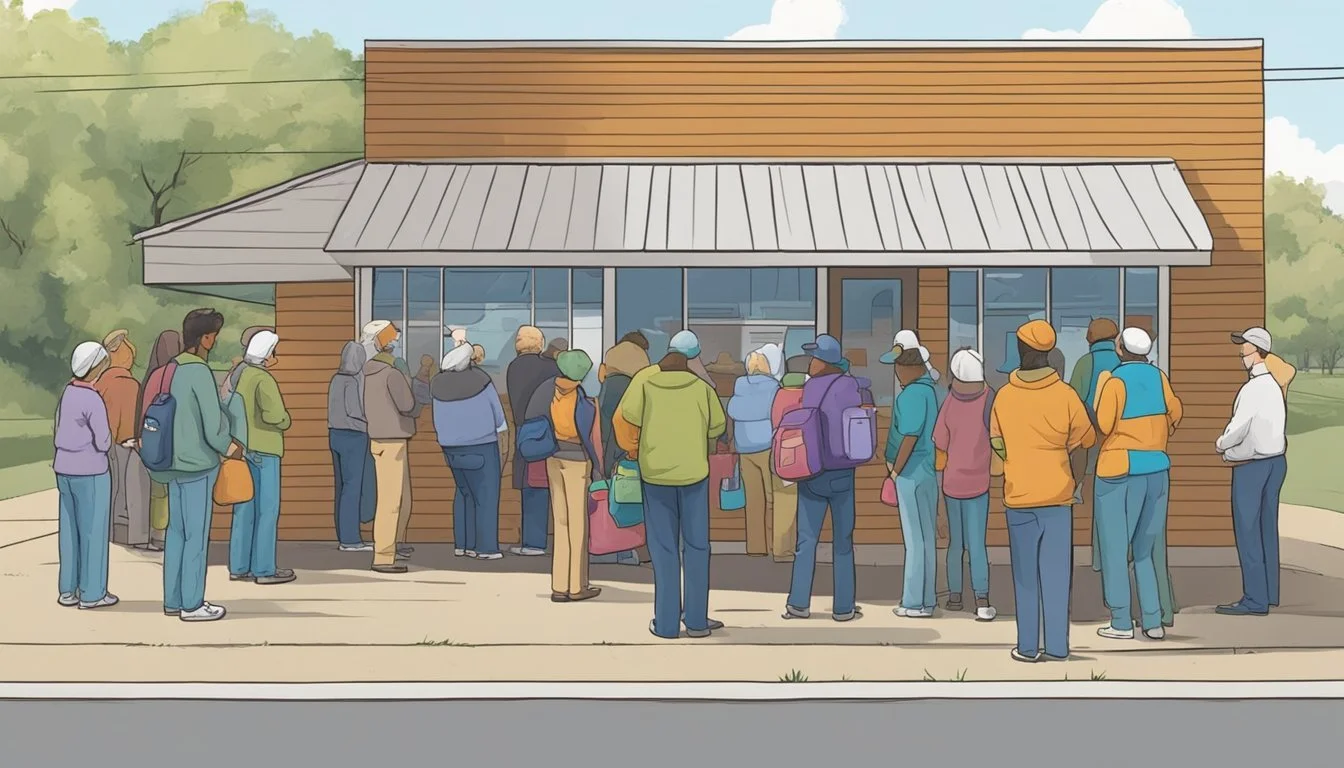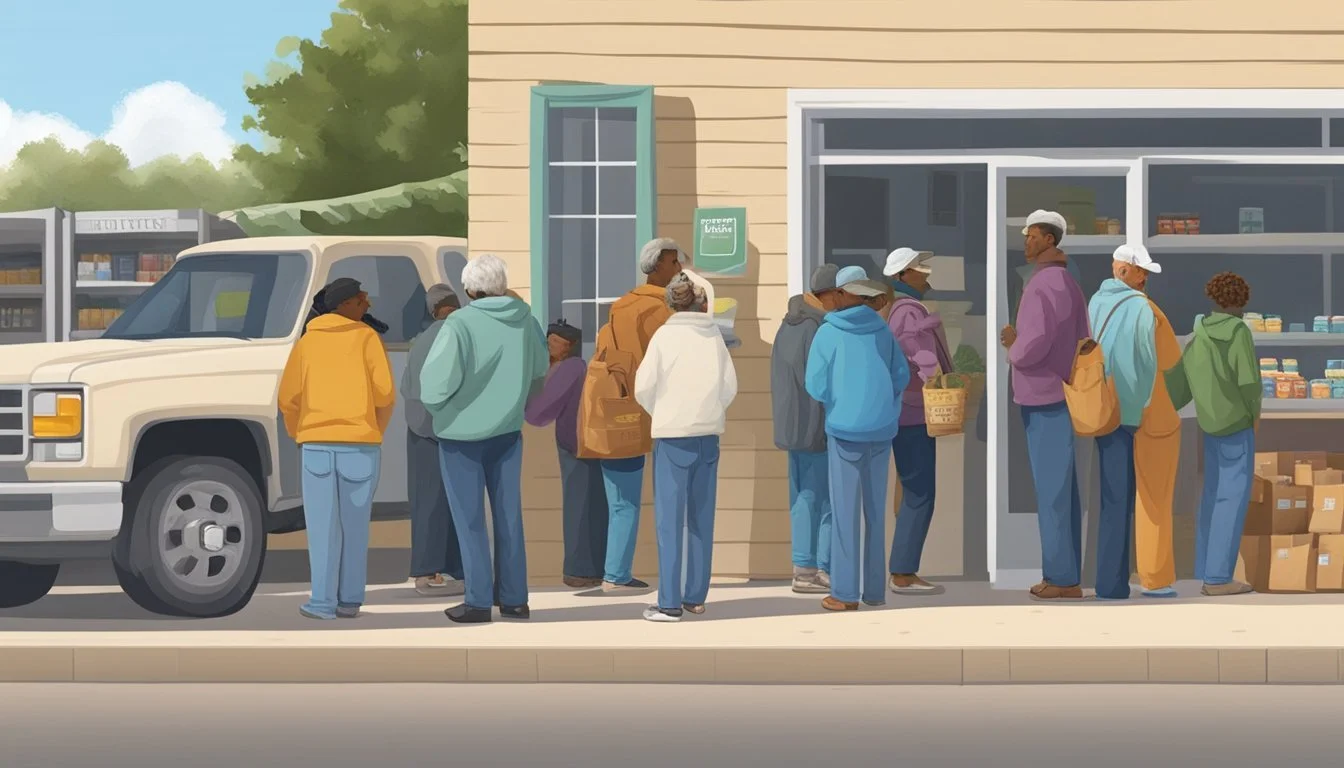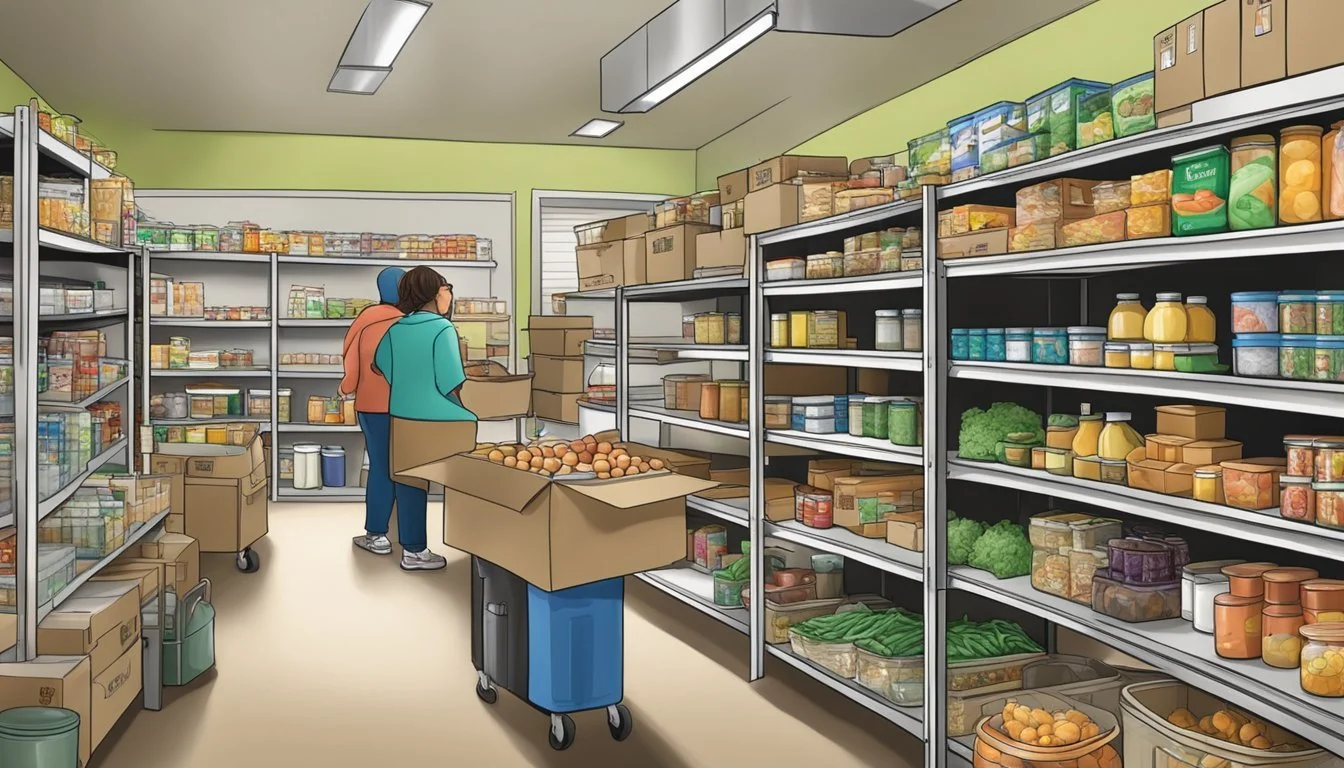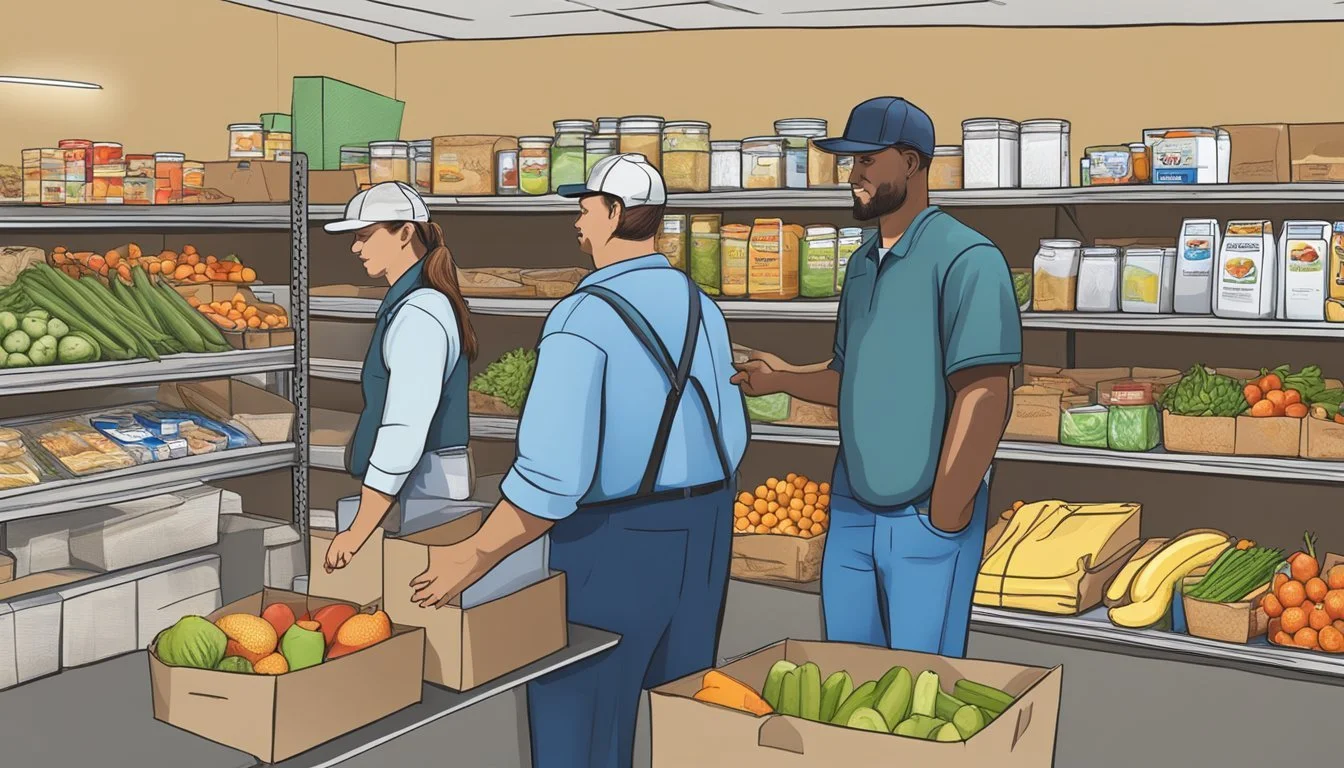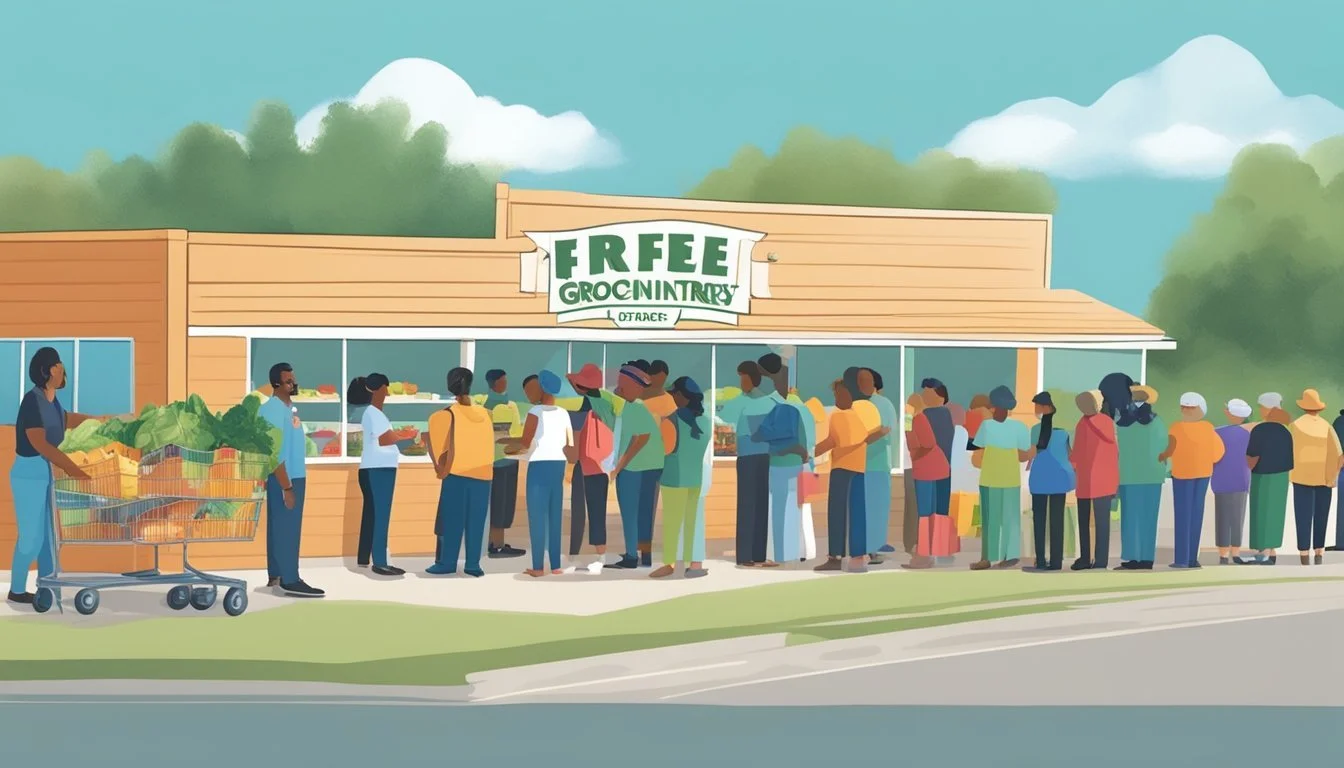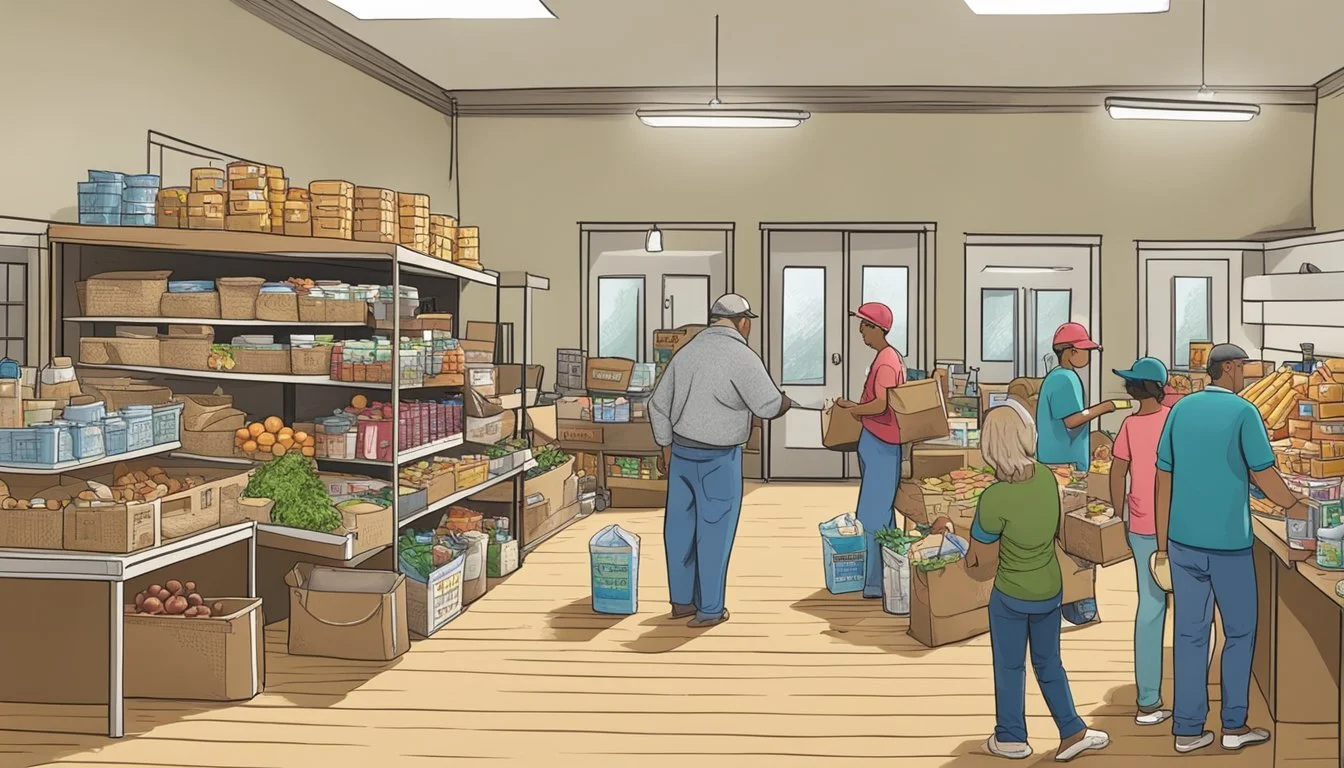Free Groceries and Food Pantries in Lipscomb County, Texas
Your Guide to Local Assistance Resources
This Article is Part of Our Guide on Free Groceries in Texas
In Lipscomb County, Texas, the fight against hunger is ongoing, and local food pantries play a critical role in this effort. These organizations provide a lifeline for families and individuals facing food insecurity, supplying free groceries and meals to those in need. These services are especially vital in rural areas where resources can be scarce and access to nutritious food is often limited. Through the support of community volunteers and partnerships with larger networks like Feeding America, Lipscomb County food pantries are able to offer a variety of food assistance programs.
Accessibility is a cornerstone of these programs, with initiatives such as drive-thru pantries ensuring that residents can obtain food without transportation barriers. Moreover, the local food banks work collaboratively to offer more than just sustenance. They connect individuals with federal assistance programs, such as the Supplemental Nutrition Assistance Program (SNAP), and provide guidance on applying for these benefits, further helping to alleviate the burden of food insecurity in the county.
Beyond immediate assistance, these organizations also focus on the importance of community involvement and the power of donations, both monetary and in-kind. The participation of local residents and businesses in supporting the food pantries is a testament to the collective effort required to combat hunger. Volunteers are the backbone of these programs, dedicating their time to organize, distribute, and sustain the food assistance services necessary for the well-being of Lipscomb County's residents.
Understanding Food Insecurity in Lipscomb County, Texas
In Lipscomb County, Texas, the pressing issue of food insecurity affects numerous residents, prompting a need for comprehensive nutritional support and effective use of community resources.
Defining Nutritional Support Needs
Food insecurity in Lipscomb County signifies a situation where individuals lack consistent, dependable access to enough affordable, nutritious food. The community faces challenges that include geographic isolation and economic limitations which contribute to this instability. Key indicators of food insecurity observed in the area include limited meal variety, reduced food intake, and disrupted eating patterns.
Assessing Community Resources
The availability and mobilization of resources dictate the effectiveness of Lipscomb County's response to food security. Resources include food pantries that provide free groceries, and organizations offering nutritional guidance and support. Local food banks play a crucial role in aiding families, and are often supplemented by charitable initiatives and government assistance programs.
Food Pantries:
Provide free grocery items
Offer fresh produce and non-perishable goods
Local Organizations:
Assist in food distribution
Educate on nutritional needs
Government Programs:
Supplemental Nutrition Assistance Program (SNAP)
Women, Infants, and Children (WIC)
These resources, when fully utilized, significantly alleviate the strain on households facing food insecurity in the county.
Identifying Food Assistance Programs
Lipscomb County residents in need have multiple avenues to secure nutritional support. Assistance is provided through various local and federal programs meticulously designed to cater to the needs of diverse demographics.
SNAP Benefits and Application
Supplemental Nutrition Assistance Program (SNAP) offers financial support for grocery purchases to low-income individuals and families. Texas Health and Human Services manage the SNAP applications. Eligible residents can apply online through the YourTexasBenefits.com website or by visiting a local Health and Human Services office. Documentation required includes proof of income, residency, and identity.
WIC Services
Women, Infants, and Children (WIC) is a program offering nutritional education and free healthy food to pregnant women, new mothers, and children under five. One can check eligibility and apply for WIC by contacting the Texas Department of State Health Services or visiting local WIC clinics. Services typically include access to:
Nutritious Foods
Infant formula
Nutrition education
Breastfeeding support
Local Soup Kitchens and Food Banks
Local food banks and soup kitchens play a vital role in providing immediate food assistance. Feeding America designates regional food banks that distribute food to smaller pantries and soup kitchens around Lipscomb County. Residents who require food urgently can visit these establishments for a meal or grocery items, no cost involved. To locate a nearby food bank or pantry, individuals may search using their zip code on the Feeding America website.
Free Groceries and Food Pantries
In Lipscomb County, Texas, residents have access to several free grocery distribution options and food pantry services. These resources aim to aid individuals and families in need, ensuring that nutritious food is attainable.
Locations and Zip Code
Lipscomb County Food Pantry: Serves residents within the county limits, zip codes including 79056 for Lipscomb and surrounding areas.
Community Help Centre: A central location that periodically provides free groceries, zip code 79005 for Booker and neighboring localities.
Operating Hours and Services
Lipscomb County Food Pantry
Hours: Tuesdays and Thursdays, 8 am - 10 am.
Services: Offers a variety of free groceries, including staples like bread, dairy, and fresh produce.
Community Help Centre
Hours: First Saturday of each month, 9 am - noon.
Services: Drive-thru pantry service where recipients can receive pre-packaged groceries directly to their vehicle.
How to Access Food Pantries
Accessing food pantries in Lipscomb County, Texas, involves understanding eligibility requirements and utilizing referrals from partner organizations. Residents in need of food assistance can find support through these community resources.
Eligibility and Income Guidelines
Eligibility for food pantry services often depends on a person's income level, which is typically compared to federal poverty guidelines. Most pantries serve individuals and families who fall within a certain percentage of the federal poverty line. It's crucial for applicants to check the specific income guidelines of each pantry, as thresholds can vary by location and resource availability.
Documentation: Pantries may require proof of income, such as pay stubs or tax returns.
Residency: Applicants usually need to be residents of the county or specific service area.
Referrals and Partner Organizations
Many food pantries operate in conjunction with local, state, and national partner organizations that provide referrals to those in need. These partners might include social service agencies, community centers, and healthcare providers.
Social Services: Agencies like SNAP can help individuals apply for food assistance and direct them to pantries.
Community Partners: Local nonprofits and faith-based groups often collaborate with pantries to reach more people in need.
Individuals seeking assistance should inquire with these partner organizations to receive accurate information on locating and accessing food pantries suited to their circumstances.
The Role and Impact of Food Banks
Food banks serve as pivotal resources for communities, acting to relieve hunger through the collection and distribution of food. They partner with a wide network of local organizations to ensure access to nutritious food for those in need.
Feeding America and Local Affiliates
Feeding America is a nationwide network with a presence in every county across the United States, including Lipscomb County in Texas. This network operates as a unifying force, connecting national food supply chains with local food banks to facilitate the flow of free groceries to the community. Local food banks, affiliated with Feeding America, adhere to standards and operational guidance to ensure food safety and maximize reach. As an example, the High Plains Food Bank, serving the Texas Panhandle, would be a typical local affiliate working to distribute resources effectively to the area.
Key Operations:
Collection of surplus food from farmers, manufacturers, and retailers.
Distribution to local food pantries and meal programs.
Food Bank Outreach and Impact
Local food banks not only distribute food but also offer programs tailored to address specific community needs. Their impact is substantial, as they function as emergency support but also work to provide long-term solutions to food insecurity. In Lipscomb County, such initiatives would be important to meet the demands of rural populations who may face barriers to accessing food.
Impact Indicators:
Increase in food distribution volumes during emergencies, such as the COVID-19 pandemic.
Support for maintaining nutritional security and diet quality for economically stressed households.
Local food banks rely on a robust volunteer network and community support to extend their impact. Additionally, informed by data and research, they regularly reassess and adapt their strategies to local needs, reinforcing their role as a vital pillar in combating food insecurity.
Volunteering and Community Support
Lipscomb County's fight against hunger relies heavily on the concerted efforts of volunteers and the generosity of donors. Individuals can engage in a range of activities to support those in need, from hands-on participation in food distribution to providing financial aid to drive local food programs.
Getting Involved with Local Food Distribution
Volunteers are the backbone of food distribution in Lipscomb County. They can support by sorting, packaging, and handing out food at local pantries and drive-thru distribution events. For those interested in volunteering, reaching out to nearby food banks is the first step. These entities typically list their volunteer opportunities online, making it easy to sign up for available shifts. The engagement doesn't end with individuals; local businesses and groups can also sponsor food drives, create awareness, and support the logistics of the food distribution efforts.
Supporting Free Food Programs Through Donations
Donations fuel the free food programs that serve Lipscomb County, with monetary contributions having a significant impact. Financial support ensures food banks can purchase high-demand items and support operational costs. People can donate directly to local food banks or through Feeding America, which efficiently distributes resources to areas like Lipscomb. Aside from money, food banks welcome donations of non-perishable goods. High-need items often include:
Canned fruits and vegetables
Whole grain pasta and rice
Canned proteins, such as tuna and chicken
Peanut butter
Community support through donations is not just limited to food items. Many services also need assistance with personal hygiene goods, with the aim to provide a holistic aid approach to residents.
Nutritional Education and Support Services
In Lipscomb County, Texas, dedicated services provide essential nutritional education and support, assisting residents in maximizing their resources to maintain a healthy diet.
Healthy Meal Planning with Limited Resources
Residents of Lipscomb County can access resources to aid in planning nutritious meals even when facing financial constraints. Feeding America offers tools and information to help individuals make the most of their food budgets. The focus is on integrating affordable, healthy options into daily meals, ensuring that a limited budget does not compromise nutrition.
Educational Programs and Workshops
To further support the community, various educational programs and workshops are available. These initiatives aim to educate participants on food groups, nutritional values, and cooking techniques that contribute to overall health. Workshops on budgeting for groceries and maximizing the benefits of programs like SNAP provide actionable information for better dietary choices.
Specialized Assistance and Seasonal Programs
In Lipscomb County, Texas, various programs are tailored to support residents with free groceries and food during specific times and to cater to the needs of vulnerable groups within the community.
Holiday Meal Distributions
During major holidays, Lipscomb County often sees an upswing in programs aimed at providing holiday meal packages to low-income families and individuals in need. Organizations, such as local churches and community centers, tend to ramp up their efforts to ensure that everyone has access to traditional holiday meals (What wine goes well with holiday meals?). These distributions are typically advertised well in advance and may require sign-ups.
Thanksgiving: Turkey and accompanying side dishes are made available through these programs.
Christmas: Hams, festive foods, and sometimes gifts for children accompany the meal distributions.
Support for Vulnerable Groups
Specialized programs in Lipscomb County exist to assist specific groups such as seniors, immigrants, and other vulnerable demographics.
Seniors: Meals on Wheels and similar services offer nutritious meals delivered to the elderly, who may not have the mobility or resources to access traditional pantries.
Immigrants: Language assistance and culturally appropriate food options are often provided to ensure that immigrant families have their dietary needs met.
Emergency Food: In the event of unforeseen circumstances or disasters, emergency food assistance becomes available immediately to support those impacted.
Specifically, these programs are designed to alleviate the stress of food insecurity for those groups who might face additional barriers or have special dietary needs, to ensure that they also have consistent access to nutritious meals.
Legal and Governmental Support for Food Security
In Lipscomb County, Texas, legal frameworks and governmental programs play a crucial role in ensuring food security for residents in need. These efforts are complemented by non-profit organizations and NGOs that work to fill gaps and extend assistance.
Government Assistance Programs
Supplemental Nutrition Assistance Program (SNAP): The cornerstone of federal food assistance, SNAP benefits provide eligible individuals and families with funds to purchase groceries. In Texas, SNAP is administered by the Texas Health and Human Services Commission, offering a lifeline to many Lipscomb County residents.
Eligibility: Based on income, assets, and household size.
Benefits: Determined monthly; accessed via Electronic Benefit Transfer (EBT) cards.
Women, Infants, and Children (WIC): Aimed specifically at pregnant women, new mothers, and young children, WIC provides supplemental foods, healthcare referrals, and nutrition education.
Services: Nutrition education, healthcare referrals, breastfeeding support.
Qualification: Pregnant, breastfeeding, postpartum women, and children under 5.
Non-Profit and NGO Contributions
Feeding America Network: Feeding America, a nationwide network of food banks, operates through local organizations to provide free food and groceries. They also support SNAP application processes and educate the public about available federal assistance programs.
Drive-Thru Pantries: Offer pre-packed food boxes in a quick and efficient manner.
Education: Inform citizens about changes to federal programs post-COVID-19.
Good Samaritan Food Donation Act: The Act encourages food donation to non-profit organizations by providing liability protection to donors. Consequently, food pantries in Lipscomb County receive support through such protected donations, bolstering local efforts to combat food insecurity.
Protection: Minimizes donor liability, encouraging more donations.
Impact: Increases the volume of food available to nonprofits for distribution.
Future Outlook and Local Initiatives
Lipscomb County's endeavors in addressing food insecurity reflect a progressive commitment to sustainable practices and integral community development. The landscape ahead is shaped by innovative programs tailored to meet local needs.
Sustainable Food Solutions
Lipscomb County has launched a series of future-focused initiatives aimed at providing free groceries in an environmentally conscious manner. Gardening programs have become a central pillar, promoting the growth of local produce that not only feeds residents but also nurtures local ecosystems. Through collaboration with regional agricultural experts, the county has begun Plant-a-Row efforts and established partnerships for fruit and vegetable gleaning programs, ensuring that surplus produce is efficiently redistributed.
Local Garden Donations: Leveraging community gardens to supplement food pantry stocks with fresh produce.
Green Partnerships: Engaging local farms to participate in gleaning, securing a steady supply of fresh, seasonal fruits and vegetables to local food pantries.
Community Growth and Development
The county’s food pantry initiatives are more than a temporary safety net; they are woven into the broader tapestry of Lipscomb's advancement strategy. Notably, new distribution strategies resembling those employed by larger food banks are being adopted to expand access to healthy food options. This includes client-choice models, empowering individuals to select their own food and thereby affirming dignity and reducing waste.
Extended Distribution Hours: Adjusting food pantry hours to fit the community's varying schedules, enhancing access.
Health-Focused Outreach: Educating community members about nutrition and offering classes on budgeting and meal preparation.
Lipscomb County's strategic efforts in free grocery initiatives and local food pantries aim squarely at a future where sustainability and community empowerment are cornerstones of lasting growth and development.
Appendix: Regional and National Resources
In Lipscomb County, Texas, individuals and families in need can access a variety of regional and national resources for free groceries and food assistance. This section provides a comprehensive directory of food banks in Texas and essential contact information for statewide assistance programs.
Directory of Texas Food Banks
Texas hosts several regional food banks that are part of a larger network providing food assistance to those in need. Two prominent entities include:
Food Bank of West Central Texas: Serving a vast area, including parts of the Panhandle, this food bank distributes nutritious food to a network of partner agencies.
North Texas Food Bank: An essential resource for the Northern Texas region, supplying meals through a network of partner organizations.
Each regional food bank operates in conjunction with Feeding America, the nation's largest domestic hunger-relief organization. For a complete list of food banks in Texas sorted by county or region, individuals can visit the Feeding America website and use the "Find Your Local Food Bank" tool to locate the nearest food bank in their area.
Contact Information for Statewide Assistance
For statewide assistance, Texans can connect with various resources:
Statewide Hotline (2-1-1): By calling 2-1-1, individuals can receive information and guidance on how to access food assistance, including the locations of food pantries and application procedures for SNAP benefits.
Texas Department of Health and Human Services: This state department offers information on food assistance programs such as SNAP and can be contacted for application support.
For further assistance and information about programs specific to Lipscomb County or nearby regions, residents may directly reach out to the regional food banks mentioned above. These organizations can provide additional details on obtaining free groceries and other forms of food assistance.

